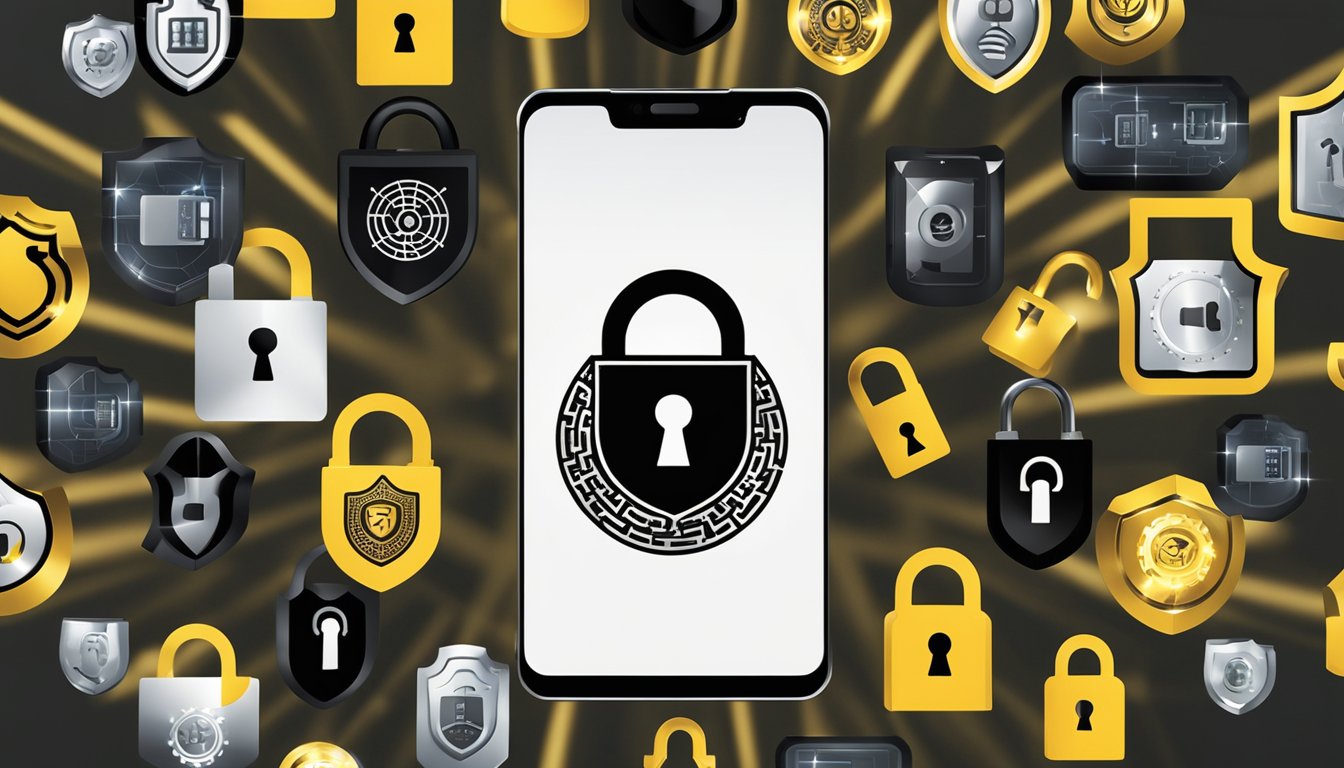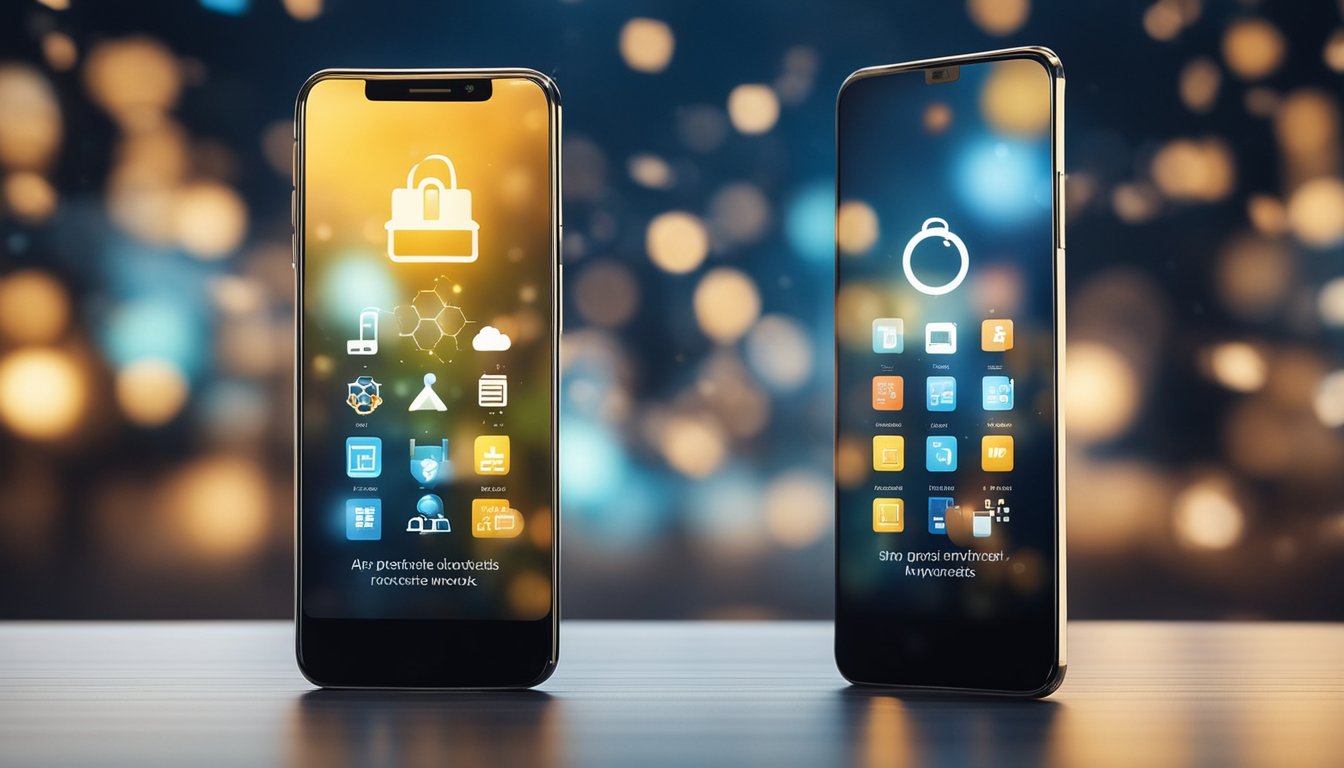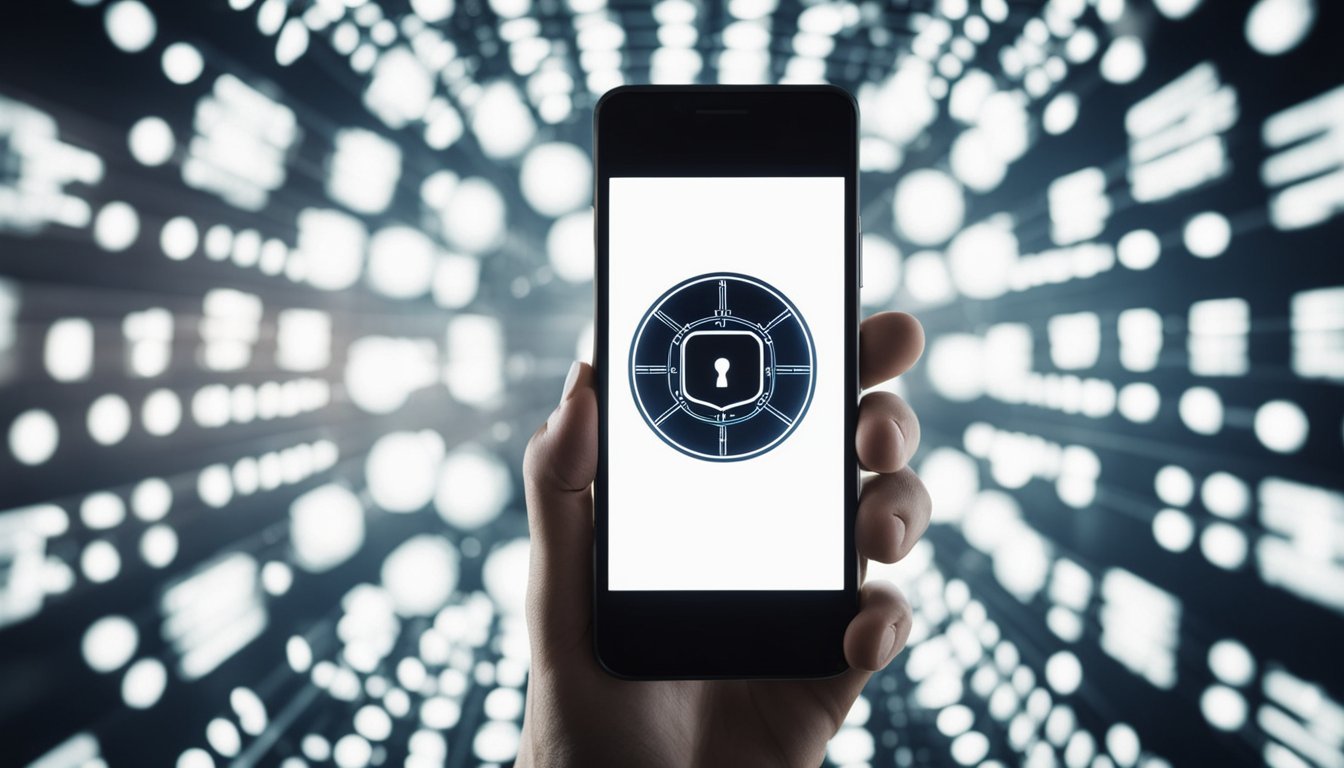Secure Your Mobile App from Cyber Threats Tips and Best Practices
Mobile apps have become an integral part of our daily lives. We use them for everything from communication to entertainment, banking, and shopping. However, with the increasing use of mobile apps, there has been a rise in cyber threats that can compromise the security of our personal data. As such, it is important to take steps to secure your mobile app from cyber threats.

Understanding Mobile App Threats is the first step towards securing your mobile app. There are various types of mobile app threats, including data theft, malware, phishing, and ransomware. These threats can be introduced through various means, such as fake apps, unsecured Wi-Fi networks, and malicious links. To protect your mobile app from these threats, it is important to implement Best Practices for Mobile App Security, such as using strong passwords, two-factor authentication, and encryption.
Securing Mobile Apps in an Organization is also crucial, as businesses often store sensitive data on mobile apps. Mobile Device Management (MDM) solutions can help organizations secure their mobile apps by implementing policies that govern app usage, access, and data transfer. App stores and carrier networks also play a role in securing mobile apps, as they can provide additional layers of security through app reviews and network security protocols.
Key Takeaways
- Understanding Mobile App Threats is essential to securing your mobile app
- Implementing Best Practices for Mobile App Security can help protect your mobile app from cyber threats
- Securing Mobile Apps in an Organization requires Mobile Device Management solutions and collaboration with app stores and carrier networks.
Understanding Mobile App Threats

As technology becomes more advanced, so do the threats to mobile app security. Mobile apps have access to sensitive data, making them an attractive target for cybercriminals. In this section, I will discuss the different types of mobile app threats and how they can be mitigated.
Malware
Malware is a type of software that is designed to harm or exploit mobile devices. It can be disguised as a legitimate app or hidden within an app. Once installed, it can steal sensitive data, track user activity, and even take control of the device. To protect against malware, it is important to only download apps from trusted sources, such as the official app stores for Android and iOS.
Data Breaches
Data breaches occur when sensitive data is accessed or stolen without authorization. This can happen through vulnerabilities in the app or by hacking into the server where the data is stored. To prevent data breaches, it is important to use strong encryption and secure authentication methods, as well as regularly testing for vulnerabilities.
Phishing Attacks
Phishing attacks are a common tactic used by cybercriminals to steal sensitive data. They typically involve sending fake emails or text messages that appear to be from a legitimate source, such as a bank or social media platform. These messages often contain links that, when clicked, lead to a fake login page where the user is prompted to enter their login credentials. To prevent phishing attacks, it is important to be cautious when clicking on links and to always verify the legitimacy of the source.
Unsecured Public Wi-Fi
Using unsecured public Wi-Fi can put your mobile device at risk of a man-in-the-middle attack. This occurs when a hacker intercepts data being sent between the device and the server, allowing them to steal sensitive information such as login credentials. To protect against this, it is important to avoid using public Wi-Fi for sensitive transactions and to use a virtual private network (VPN) when connecting to the internet.
In conclusion, mobile app security threats are a serious concern that should not be taken lightly. By understanding the different types of threats and taking appropriate measures to mitigate them, users can help protect their sensitive data and prevent security breaches.
Best Practices for Mobile App Security

As a mobile app developer, I understand the importance of securing user data and preventing unauthorized access to it. To ensure the security of a mobile app, it is crucial to follow best practices that cover secure coding practices, user authentication and authorization, data encryption, and session management. In this section, I will discuss some of the best practices for mobile app security.
Secure Coding Practices
Secure coding practices are essential for developing a secure mobile app. It is crucial to follow secure coding practices to prevent vulnerabilities that can be exploited by attackers. Here are some best practices for secure coding:
- Use secure coding frameworks like OWASP Mobile Application Security to ensure that your code is secure.
- Regularly update your code to fix vulnerabilities and ensure that it is up-to-date with the latest security standards.
- Use static and dynamic code analysis tools to identify vulnerabilities in your code.
- Implement input validation to prevent injection attacks.
- Use parameterized queries to prevent SQL injection attacks.
- Avoid using hardcoded passwords or keys in your code.
User Authentication and Authorization
User authentication and authorization are crucial for securing a mobile app. Here are some best practices for user authentication and authorization:
- Implement two-factor authentication to ensure that only authorized users can access the app.
- Use end-to-end encryption to protect user data during transmission.
- Implement password protection policies to ensure that users create strong passwords.
- Use app permissions to control access to sensitive features and data.
Data Encryption and Session Management
Data encryption and session management are essential for securing user data. Here are some best practices for data encryption and session management:
- Use strong encryption algorithms to protect user data at rest and in transit.
- Implement session timeouts to ensure that inactive sessions are terminated.
- Use secure session management to prevent session hijacking attacks.
- Implement data protection policies to ensure that sensitive data is encrypted and protected.
By following these best practices, I can ensure that the mobile app I develop is secure and protected from cyber threats.
Securing Mobile Apps in an Organization

As an app developer, I understand the importance of securing mobile apps in an organization. In today's digital world, mobile devices have become an integral part of our lives, and we use them for a variety of purposes, including personal and professional use. However, mobile devices are also vulnerable to cyber threats, and if they are not protected, they can become a serious liability for any organization.
To ensure that mobile apps are protected, organizations need to implement a comprehensive security framework that covers every aspect of app development, deployment, and management. This framework should include policies and procedures that govern how apps are developed, tested, deployed, and maintained.
One of the key elements of this framework is device management. Organizations should have a centralized system that allows them to manage all the devices that are used by their employees. This system should include features such as remote wipe, password enforcement, and device encryption.
In addition to device management, organizations should also ensure that their employees are trained in mobile app security. Employees should be aware of the risks associated with using mobile devices, and they should know how to protect themselves and their devices from cyber threats.
Another important aspect of mobile app security is research. Organizations should conduct regular research to identify new threats and vulnerabilities, and they should update their security policies and procedures accordingly.
When it comes to app development, organizations should follow a secure software development lifecycle (SDLC) framework. This framework should include security testing at every stage of the development process, from design to deployment.
Finally, organizations should also consider the productivity benefits of mobile apps. Mobile devices can increase productivity, but they can also be a distraction. Therefore, policies should be implemented to ensure that employees are using mobile apps for work-related tasks only.
In conclusion, securing mobile apps in an organization is crucial to protect sensitive data and ensure that mobile devices are not a liability. By implementing a comprehensive security framework that covers all aspects of app development, deployment, and management, organizations can ensure that their mobile apps are protected from cyber threats.
The Role of App Stores and Carrier Networks

As mobile app usage continues to rise, app stores and carrier networks play a crucial role in ensuring the security of mobile applications.
App stores such as Google Play and Apple App Store have implemented strict guidelines and policies to ensure that only secure and reliable apps are available for download. These guidelines include app testing, review, and approval processes to ensure that apps meet certain security standards. However, it is still important for users to exercise caution and research the app before downloading it.
Carrier networks also play a critical role in mobile app security. Mobile devices often rely on carrier networks to transmit data, and insecure communication can leave personal data vulnerable to cyber threats. Carrier networks like Verizon have implemented security measures to protect users from these threats, such as VPN services and encryption.
However, there are still risks associated with using carrier networks. Insecure data storage can leave sensitive information such as bank account numbers vulnerable to cyber attacks. It is important for mobile app developers to prioritize application security testing and implement measures such as encryption to mitigate these risks.
Overall, while app stores and carrier networks have made significant strides in improving mobile app security, there is still room for improvement. As the mobile app industry continues to grow, it is important for all entities involved to prioritize the security of personal data and work towards closing the encryption gap in mobile application security.
Frequently Asked Questions

What are the most common cyber threats for mobile apps and how can they be prevented?
The most common cyber threats for mobile apps include data breaches, malware, phishing, and man-in-the-middle attacks. These threats can be prevented by implementing strong encryption, using secure coding practices, regularly updating the app, and educating users about safe browsing habits.
What are the best practices for mobile app security?
The best practices for mobile app security include implementing strong authentication measures, encrypting sensitive data, using secure coding practices, regularly updating the app, and conducting thorough security testing.
How can you conduct a thorough mobile application security testing?
You can conduct a thorough mobile application security testing by using automated testing tools, performing manual testing, and conducting penetration testing. It is also important to test the app on different operating systems and devices to ensure compatibility and security.
What are the essential components of a mobile application security checklist?
The essential components of a mobile application security checklist include secure coding practices, authentication measures, encryption of sensitive data, regular updates, secure storage of data, and thorough security testing.
Why is mobile application security important for businesses and users?
Mobile application security is important for businesses and users because it protects sensitive data from cyber threats, prevents financial losses, and maintains the reputation of the business. It also ensures the safety and privacy of users' personal information.
What are the most effective mobile app security tools and technologies?
The most effective mobile app security tools and technologies include mobile device management (MDM) solutions, mobile application management (MAM) solutions, mobile threat defense (MTD) solutions, and secure coding practices. These tools and technologies help prevent data breaches and protect sensitive information from cyber threats.

We are committed to delivering a new level of automation that will help organizations save time, money, and staffing resources.
 WRITE FOR US!
WRITE FOR US!
